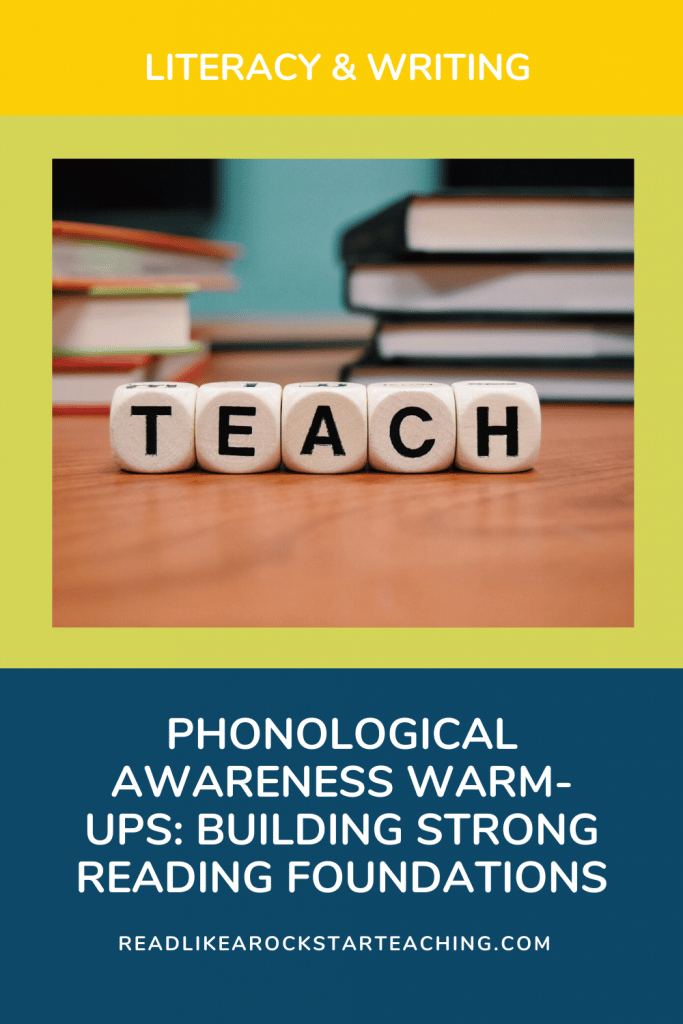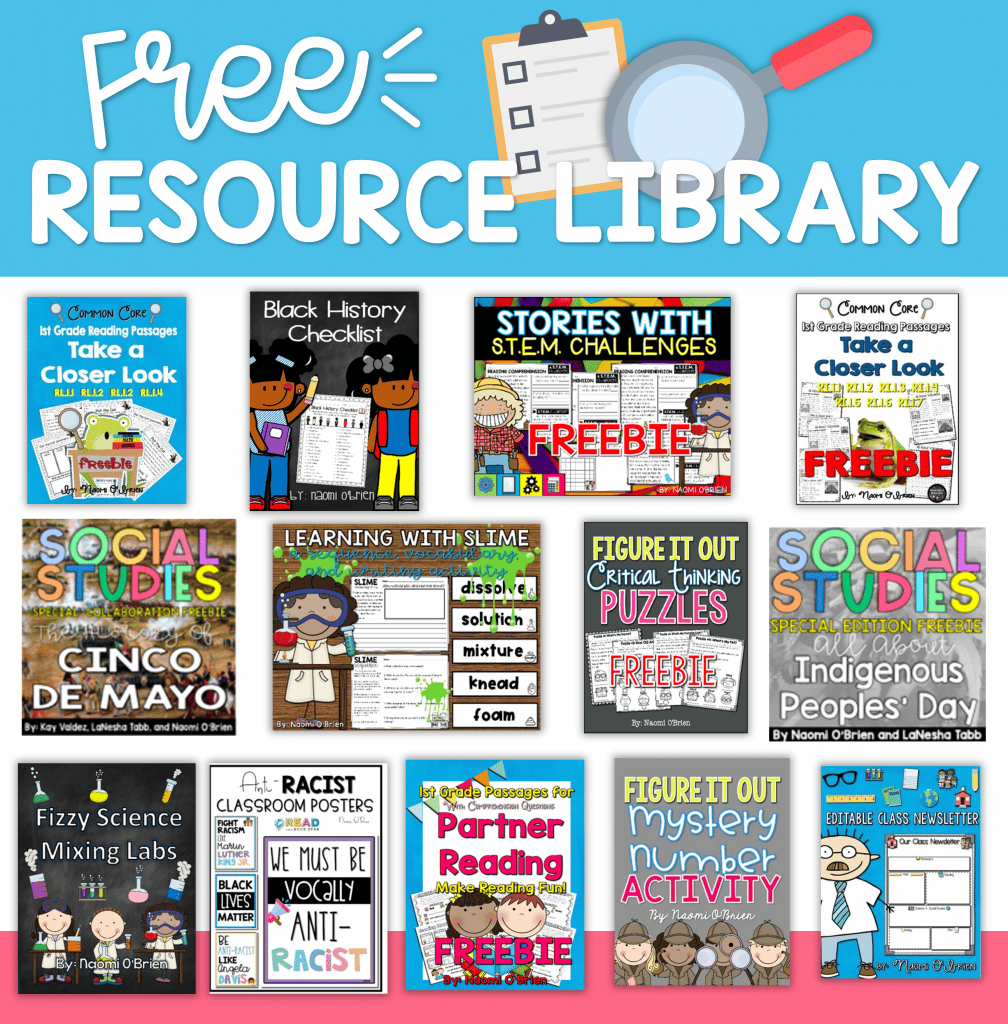These warm-ups have been a small group life saver! Focusing on Phonological Awareness and Sight Words for the first few minutes of small group has helped to accelerate and strengthen my students phonological awareness. I use one sheet a week. I print out 5 for each student in my small group and keep each sheet in a sheet protector. We review each skill quickly. If they struggle in a particular area, I make a note to spend more time on the area the next day, by reviewing the sheet AND giving more examples, modeling, and extra time to practice. I lead on Monday and Tuesday. Students partner up on Wednesday and Thursday. They review the skills individual Friday.
Isolating Sounds: Say the word. Use your fingers or counters to keep track of the sounds you hear. In no particular order, ask students about the beginning, middle, and last sounds they hear. Some days you might ask for the middle sound first. Don’t always ask for the sounds in the right order.
Substituting Sounds: Say the word. Model how to identify the beginning sound. Model saying the new word after you’ve substituted the sound given on the sheet. Give students a chance to practice.
Adding Sounds: Say the initial consonant, pause and then give the vowel and constants that follow (onset and rime). Students should say the word they heard.
Sight Words: I use Fry’s Sight Words in order, in groups of 10. Review all 10 words each day, all week long. Add the words to your Word Wall for students to use. For the star, allow students to choose a special word they want to learn that week. Write it on an index card, dry erase board, or the sheet protector. My groups usually all decide on the same word and learn it together!
Blending Sounds: Tap each dot, and say each sound with the students. Start out slowly. Start to say each sound quickly and ask students if they can blend the sounds together to make a word.
Deleting Sounds: Practice taking off the beginning or ending sound of words. Teacher Prompt: “Say cup. Now say cup without the /c/.”
Ending Sounds: Say each word represented by the picture. Ask students to listen for the two words that have the same ending sound. Once they pick the words correctly, ask them to identify the sound. See if students can produce more words with the same sound at the end.
Middle Sounds: Say each word represented by the picture. Ask students to listen for the two words that have the same middle sound. Once they pick the words correctly, ask them to identify the sound. See if students can produce more words with the same sound in the middle.
Syllables: Teach students how to listen for the natural split in sounds that occur in words. For a spelling tip, tell students that there must be a vowel in each syllable. Practice clapping or tapping out syllables. Students can circle or place a counter on the correct number.
Deleting Sounds: Practice taking off the beginning or ending sound of words. Teacher Prompt: “Say cup. Now say cup without the /p/.” For blends students should break the blend apart. For example: Teacher Prompt: “Say globe. Now say globe without the /g/.” Students should respond: “lobe”.
Segmenting Sounds: Say each word. Then segment, or divide the word into the separate sounds it is made up of.Teacher Prompt: “Segment the word flag into the sounds that make up the word.” Students should respond: “/f/ /l/ /a/ /g/.” They should not respond with: “/fl/ /a/ /g/.” If they do, praise them for hearing the other sounds, and focus their attention on the beginning blend that should have been separated.
Rhymes: Say each word. Remind students that rhymes don’t need to have the same spelling, but they do need to have the same word ending sounds. If students can not produce a rhyme yet, give them a word ask which word on their sheet rhymes with the word you said. If that is too difficult, give students two words that rhyme and discuss why they are rhymes. Give students two words that do not rhyme, and discuss why they are not rhymes.
Beginning Sounds: Say each word represented by the picture. Ask students to listen for the two words that have the same beginning sound. Once they pick the words correctly, ask them to identify the sound. See if students can produce more words with the same sound at the beginning.
Word Count: Tell students to close their eyes and listen to the sentence you read. See if they can hear how many words are in the sentence. If students struggle with this, have them touch each word as you read it. Some students may skip to the next word when they hear different syllables in one word. Remind them to listen and concentrate on what is being said, not just the sounds.
Making the time to include these quick warm ups at each small group meeting improved my students reading skills so much. We were able to tie in these important skills when we moved on to guided reading. Students would actively look for sight words, find rhymes they could manipulate by adding or deleting sends, and segment and blend words while they were reading! I highly recommend using these skills whole group and at small group for quick reading warm ups!
A lot of these phonological warm ups matched up nicely with our daily reading goal.
Hope these ideas are helpful for your little readers!
Have fun teaching!
XOXO
Mrs. O’Brien




